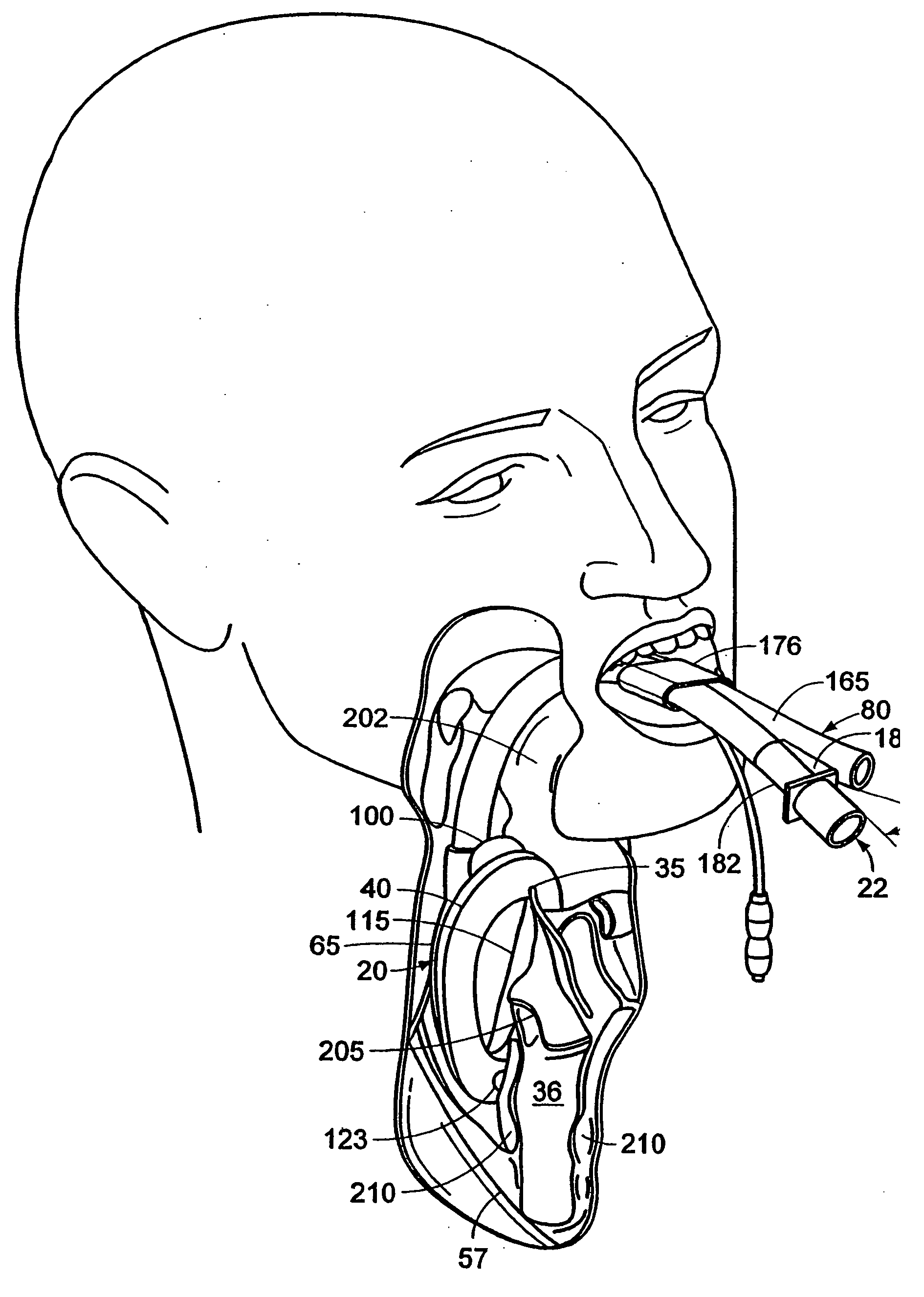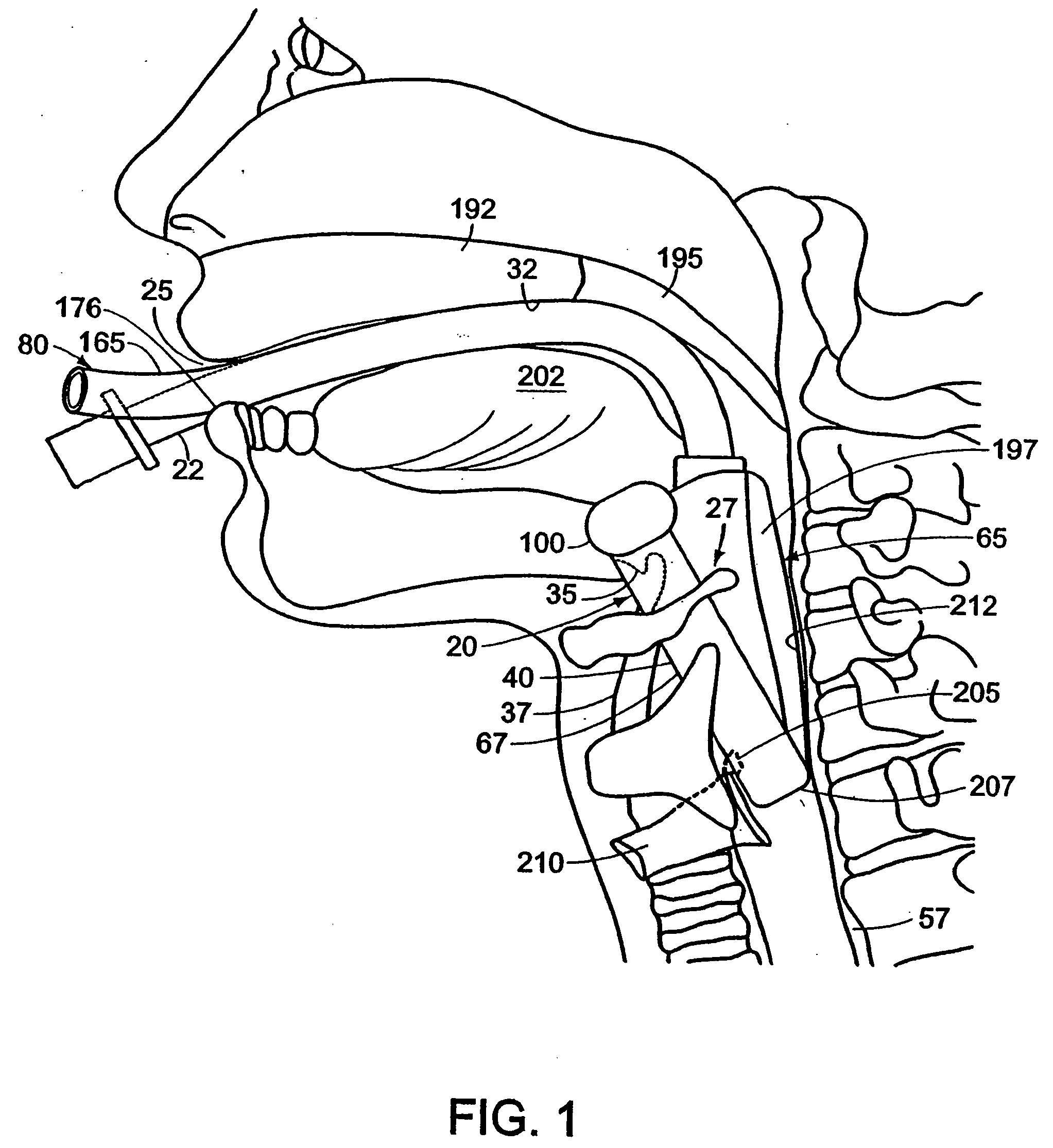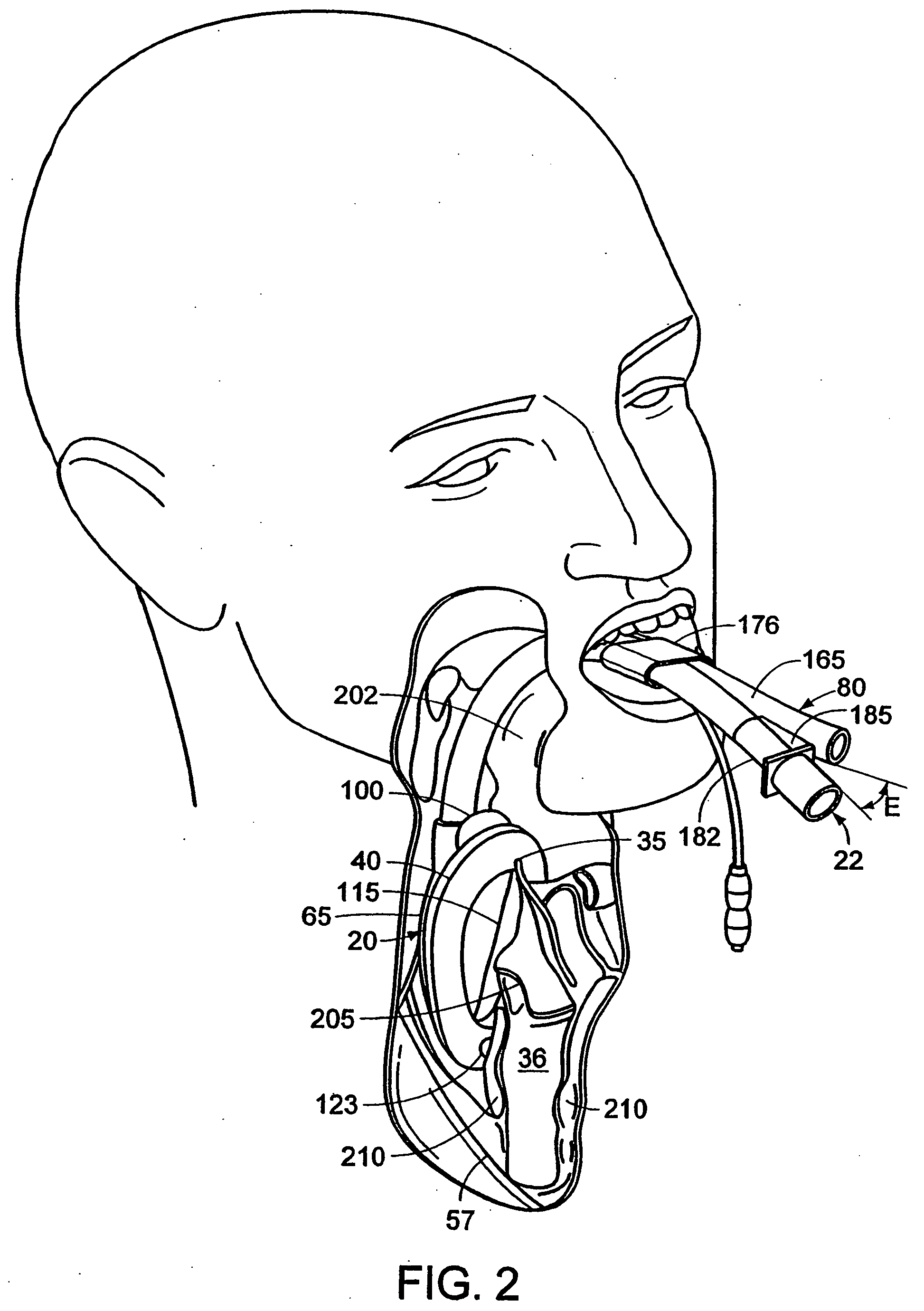Laryngeal mask airway device
a technology of airway device and laryngeal mask, which is applied in the direction of life-saving devices, respiratory apparatus, trachea tubes, etc., can solve the problems of unwanted resistance to airflow and the inability to prevent obstruction of the bars described abov
- Summary
- Abstract
- Description
- Claims
- Application Information
AI Technical Summary
Benefits of technology
Problems solved by technology
Method used
Image
Examples
second embodiment
[0068]FIGS. 18 and 19 show the backplate 27b. Parts in FIGS. 18 and 19 having corresponding parts in FIGS. 16 and 17 have the same reference numeral with the addition of suffix b. The backplate 27b is similar to the backplate 27 illustrated in FIGS. 16 and 17 except that the backplate 27b does not a strap similar to strap 100.
[0069] The evacuation tube 80 comprises an internal-drain tube 115 extending between the tube-joint 92 and the distal region 45 of the main-cuff 40 on the laryngeal-side 81 of the backplate 27. The internal-drain tube 115 longitudinally traverses the interior of the distal region 45 of the main-cuff 40 in sealed relation therewith for operative engagement and communication with the inlet of the oesophagus 57. The internal-drain tube 115 is anterior relative to the seam 85 of the main-cuff 40 such that the seam is disposed between the internal-drain tube and the distal end of the oval portion 87.
[0070] The internal-drain tube 115 therefore pierces the distal re...
third embodiment
[0113]FIGS. 23 and 24 illustrate the LMA-device 20c. Parts in FIGS. 23 and 24 having corresponding parts in FIGS. 1 to 22 have the same reference numeral with the addition of suffix c. The main-cuff 40c may have soft and yielding ridges (not shown) bilaterally disposed on the anteriorly-facing distal region 45c of the main-cuff which are suitably contoured to fill the anatomical grooves known as the pyriform fossae to increase the sealing efficacy of the main-cuff. The LMA-device 20c exploits the triangular cross-section of the grooves of the pyriform fossae which are roofed over and isolated by the anterior surface of the main-cuff 40c bilaterally. The entire length of the grooves of the pyriform fossae are covered by the main-cuff 40c such that a respective cavity is defined by each groove and the contiguous portion of the anterior surface of the main-cuff. Incorporation of one or more one-way valves 215, such as a reed or duck-bill valve, in the anterior wall of the main-cuff 40c...
PUM
 Login to View More
Login to View More Abstract
Description
Claims
Application Information
 Login to View More
Login to View More - R&D
- Intellectual Property
- Life Sciences
- Materials
- Tech Scout
- Unparalleled Data Quality
- Higher Quality Content
- 60% Fewer Hallucinations
Browse by: Latest US Patents, China's latest patents, Technical Efficacy Thesaurus, Application Domain, Technology Topic, Popular Technical Reports.
© 2025 PatSnap. All rights reserved.Legal|Privacy policy|Modern Slavery Act Transparency Statement|Sitemap|About US| Contact US: help@patsnap.com



